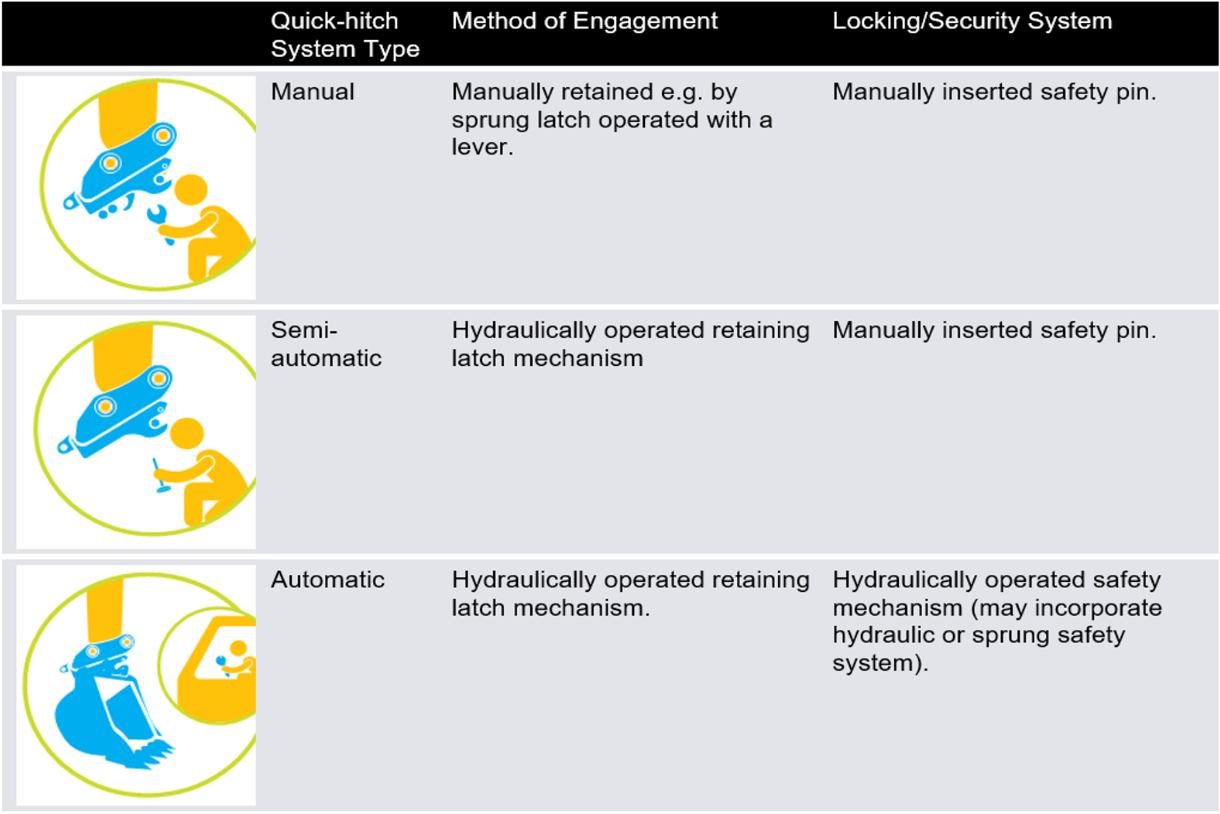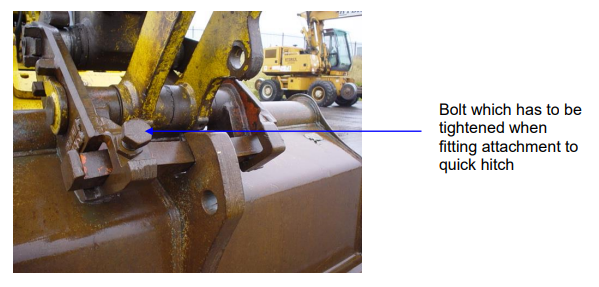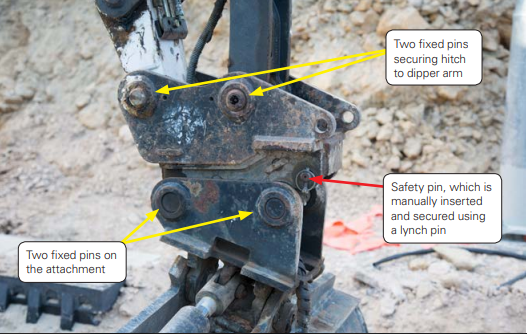Earthmoving Plant - Quick Hitches
References: R Record keeping requirement | E An engineering/certification requirement | P A permit to work requirement | S A safe work method statement (SWMS) / written plan
Informative
A quick hitch is a device permanently fitted to an excavator arm or a backhoe arm to facilitate rapid mounting or dismounting attachments. Quick hitches are also known as quick couplers. Quick hitches must be used to secure buckets to the excavator arm. Quick hitches must comply with AS 4772: Earth-moving Machinery – Quick Hitches for Excavators and Backhoe Loaders.
There are 3 main types of quick hitch:




Potential Hazards
- Failure in the hydraulics that are used for retaining the attachment on the quick hitch
- Use of non-compatible attachments
- Design of the hydraulic circuit fails to minimise loss of pressure
- Excessive wear on the corresponding parts
- Improper engagement of the primary retention system
- Failure to engage the manual safety system
- Failure to verify that the safety system has been engaged
- Unintentional disengagement of the attachments from unintended activation of controls
Semi-automatic or automatic quick hitches are preferred and should be used on MPX projects
AS 4772 requires that, in addition to its primary retention system, all quick hitches are fitted with an additional safety system which enables retention of the attachment to the quick hitch in the event the primary system fails. The additional safety system should:
- Be positively and mechanically locked in an engaged position
- Need to be intentionally disengaged for the attachment to be disconnected
- Only be used to support attachments for which they are designed
- Be maintained in proper working order
- Be marked with model, serial number, manufacturer’s name, quick hitch weight and maximum rated capacity as well as the capacity of each lifting point
Document Control
Version 1 August 2019 – New Standard







